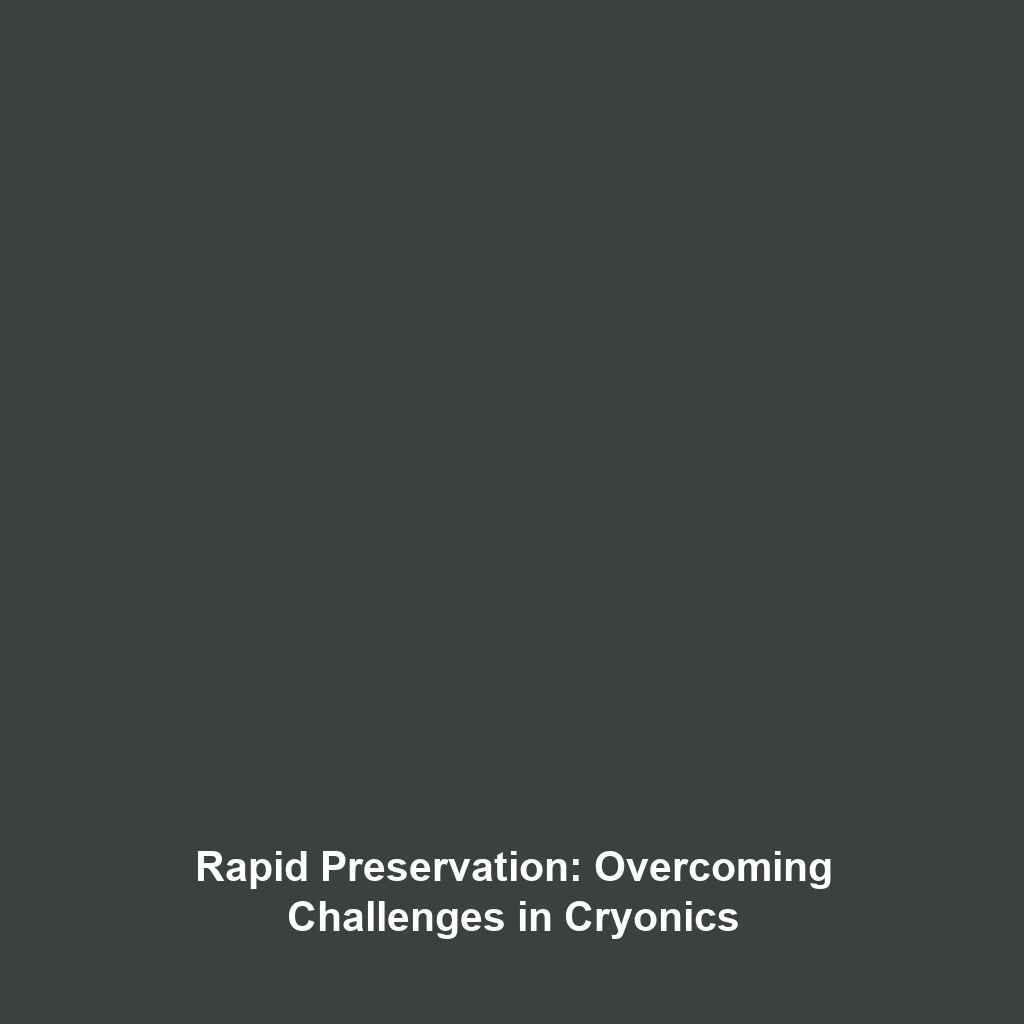Timing in Cryonics: Importance of Rapid Preservation
Cryonics, the practice of preserving individuals at very low temperatures after legal death, aims to minimize cellular damage in hopes of future revival. Rapid preservation is critical to minimize damage to the brain and organs, yet legal and logistical challenges can significantly delay this process. Understanding the implications of timing within the context of Cryonics & Life Extension not only highlights the delicate nature of this practice but also positions it at the forefront of scientific exploration aimed at extending human life.
Key Concepts
The concept of timing in cryonics revolves around several key principles:
- Cerebral Ischemia: Delay in preservation leads to brain ischemia, where oxygen deprivation results in irreversible damage. Rapid response can mitigate this effect.
- Cryoprotectants: These substances prevent ice formation within cells during the freezing process, but their effectiveness diminishes with delays.
These elements illustrate the urgency and complexity involved in the preservation process, emphasizing how timing plays a vital role in the successful application of cryonics for life extension.
Applications and Real-World Uses
Understanding how rapid preservation is used in cryonics paves the way for several real-world applications:
- Post-Mortem Preservation: Techniques to ensure immediate preservation post-legal death.
- Medical Emergencies: Implementing rapid preservation protocols for individuals at risk of brain death.
These applications underscore the practical aspects of timing in cryonics and its significant contribution to life extension efforts.
Current Challenges
Despite its potential, the study and application of timely preservation in cryonics face various challenges:
- Legal Constraints: Issues surrounding the definition of death often delay intervention.
- Logistical Hurdles: Accessibility of cryonic facilities and equipment can inhibit timely action.
- Public Perception: Societal skepticism regarding cryonics can lead to delays in setting up preservation protocols.
Addressing these challenges is critical for the future of cryonics and life extension.
Future Research and Innovations
Innovations aiming to improve rapid preservation techniques are underway. Future research may focus on:
- Advanced Cryoprotectants: Development of newer compounds that enhance cellular protection against ice formation.
- Rapid Preservation Devices: Creation of portable devices that can facilitate immediate preservation in various settings.
These breakthroughs could significantly augment the effectiveness and accessibility of cryonics, shaping its role in life extension.
Conclusion
In conclusion, the timing of rapid preservation is critical in the field of cryonics to minimize damage to the brain and organs. Legal and logistical challenges pose significant barriers, but understanding these issues opens the door for innovative solutions. This highlights the importance of continued research and public engagement in the realm of Cryonics & Life Extension. For further information, explore our pages on advanced cryoprotectants and best practices in cryonics.

